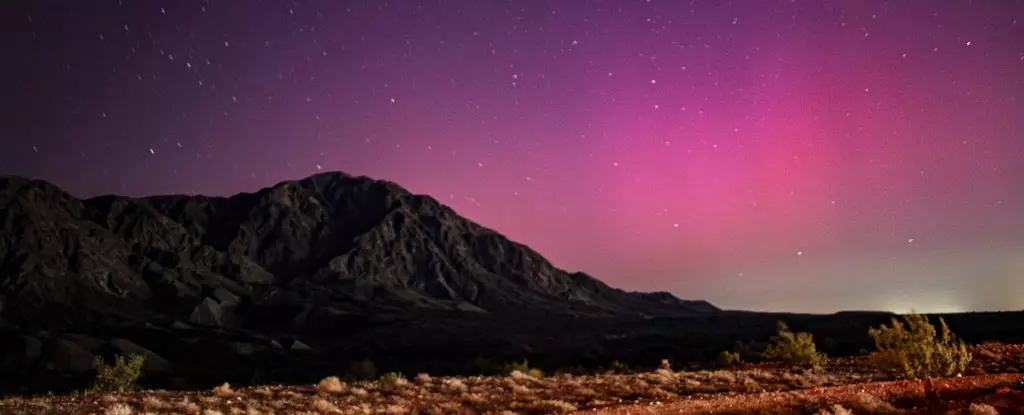On Monday, the Earth experienced a level-four geomagnetic storm, which has the potential to bring the northern lights further south than usual. This phenomenon, observed by a specialized center at the US National Oceanic and Atmospheric Administration (NOAA), is caused by coronal mass ejections (CMEs) from the Sun. These explosions of particles disrupt the Earth’s magnetic field upon arrival, leading to stunning auroras in the night sky.
While the sight of auroras can be a breathtaking experience, solar storms can have negative effects as well. High-frequency communications can be degraded, satellites may experience disruptions, and the electricity grid is at risk of overloads. In light of these potential issues, operators of sensitive infrastructure have been advised to implement measures to mitigate the impact of geomagnetic storms.
In May, the Earth witnessed the most potent geomagnetic storms in the past 20 years. These storms caused auroras to illuminate the night sky in regions such as the United States, Europe, and Australia, reaching lower latitudes than usual. The frequency of such events has been increasing because the Sun is currently nearing the peak of its 11-year cycle.
Eric Lagadec, an astrophysicist at the Cote d’Azur Observatory in France, highlighted the current abundance of auroras due to the ongoing solar storm. He mentioned the possibility of viewing these auroras until nightfall, raising expectations for a spectacular display. However, it is crucial to consider the potential disruptions that solar storms can cause to various technologies and systems reliant on stable communication and electricity.
While solar storms can offer awe-inspiring natural light displays in the form of auroras, they also pose risks to critical infrastructure and technology. By monitoring and preparing for such events, it is possible to mitigate the negative impacts and appreciate the beauty of these celestial phenomena safely. As we continue to study and understand the behavior of the Sun and its impact on Earth, we can better prepare for future solar storms and safeguard our planet’s technological systems.


Leave a Reply